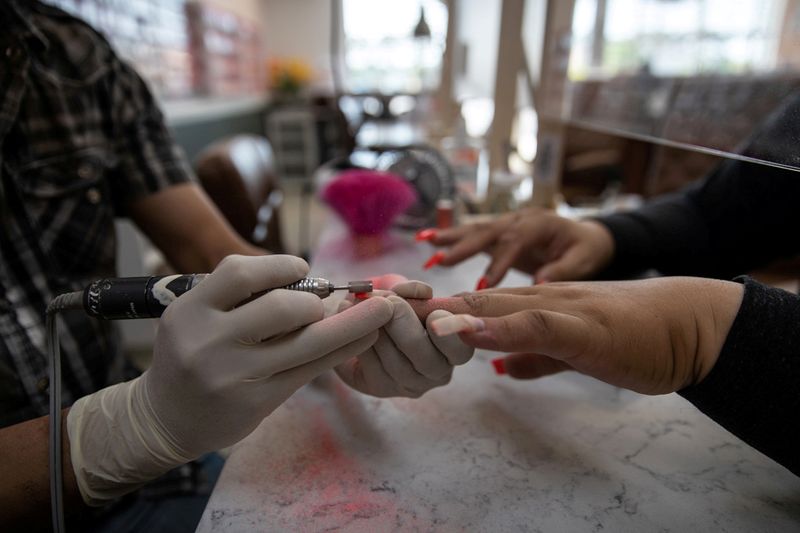This post was originally published on this site
https://i-invdn-com.akamaized.net/trkd-images/LYNXMPEG4S0V9_L.jpg
(Reuters) – When Yahaira Caraballo opened her nail salon in the Bronx, New York nearly seven years ago, it was a bare-bones shop with two nail technicians.
Earlier this year, she had six nail technicians, a full-time receptionist and a cleaning person, a renovated salon, and a following that included as many as 45 clients on a busy day.
Now Caraballo, 38, doesn’t know how long it will be before her clients can once again sit side by side at her black shimmery nail bar for manicures, or on her salon’s long studded bench to have pedicures.
“We were pretty successful prior to this,” said Caraballo. She’s running the numbers to calculate if she can operate at half her usual capacity – the level she estimates will allow for enough space between customers to meet social distancing guidelines. “It will have to work one way or the other, even if I have to cut some expenses or inventory.”
She is still waiting for clearance from city and state officials to reopen her salon, which has been shuttered since late March when New York closed down all nonessential businesses to contain the spread of the coronavirus.
After that happens, there’s the question of how many people will show up. Traffic had slowed to below half the usual pace even before the lockdown, as people became more nervous about becoming infected with COVID-19, the illness caused by the novel coronavirus.
Caraballo is one of millions of small U.S. business owners trying to adapt to survive the aftermath of the pandemic. Reuters will follow several over the next 12 months as they face crowd restrictions, reduced demand and public health concerns.
Caraballo hopes to re-open in mid-June with plastic shields at the nail bar to create a barrier between technicians and clients. Customers will be welcome by appointment only and Caraballo plans to have the salon professionally cleaned at least twice a month.
She is not counting on getting much help.
Her landlord offered to create a rent payment plan once the salon reopens, because she is two months behind. But she hasn’t been able to tap a loan from the federal Paycheck Protection Program (PPP), after applying twice.
Part of the $2.9 trillion economic relief package passed by Congress, PPP loans are meant to help small businesses keep employees on their staff.
Some minority business owners like Caraballo, who moved to New York from the Dominican Republic more than 20 years ago, have struggled to access the aid.
About four in ten beauty salons who applied for PPP loans did not receive them, the Professional Beauty Association, a trade group, found https://www.probeauty.org/docs/default-source/advocacy-documents/fica/pba_salonemployerpppsurvey_.pdf.
The federal government tried to reach more minority groups in a second round of PPP loans, by reserving $30 billion out of the $310 billion pool for banks with less than $10 billion in assets. The government also set aside $10 billion in funds for Community Development Financial Institutions (NASDAQ:FISI), which are more likely to have relationships with minority-owned businesses and those in rural areas.
The first time Caraballo applied, through her accountant, she was told the funds were depleted. She has not heard back from her lender after a second application a month ago.
A loan of $15,000 to $25,000 would help her pay for rent, a deep cleaning, payroll and other debts. “I don’t even know if this is going to be over soon,” she said. “I feel helpless in a way.”
Caraballo estimates her new monthly revenue may average $14,000, half what she could make before the crisis. After paying a 60% sales commission to her nail techs, nearly $3,000 a month for rent and about $2,500 for utilities and other costs, it will be tough to break even.
“Hopefully it will get better,” she said. “We can only be optimistic.”

